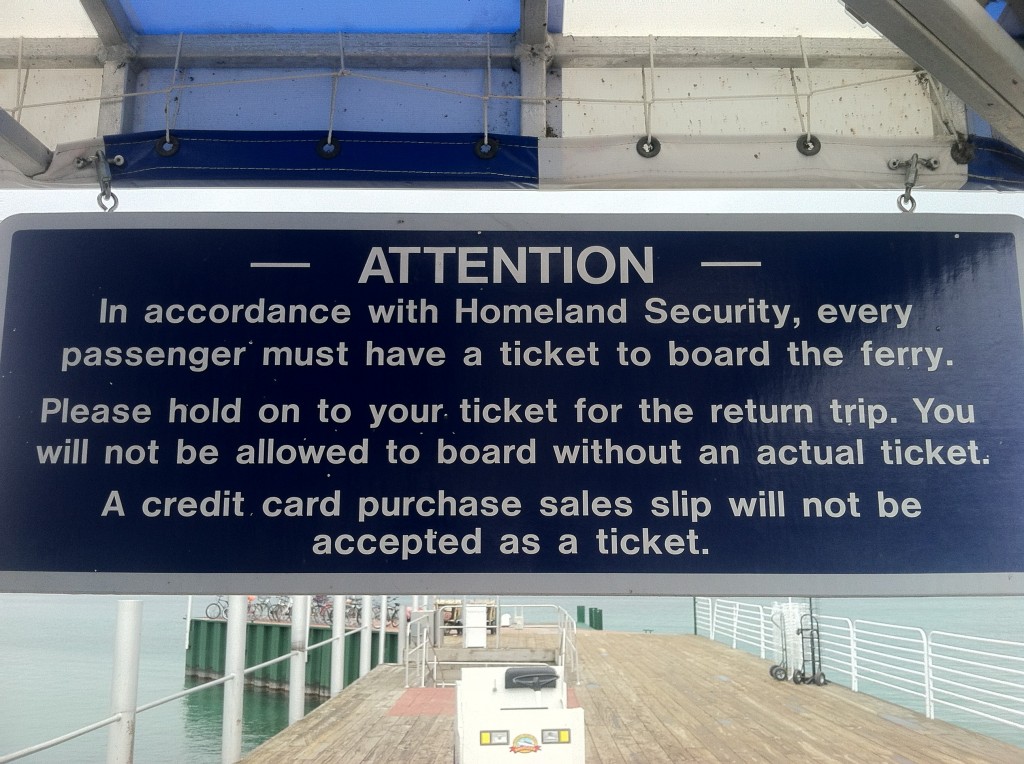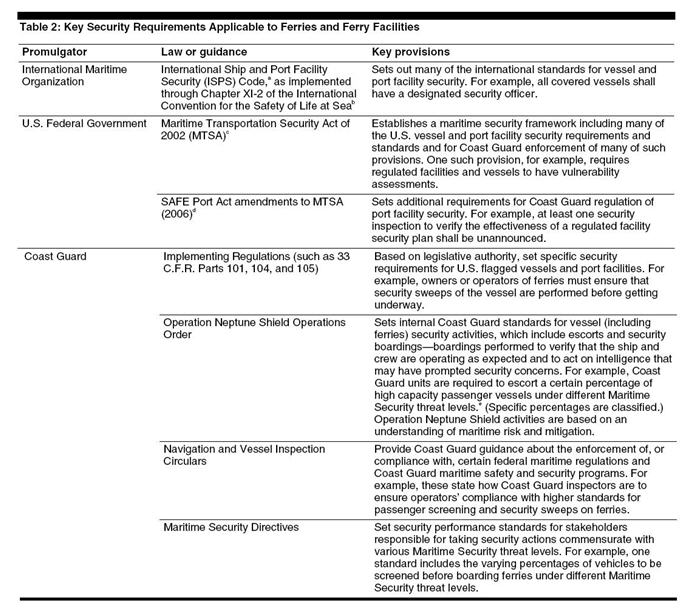What is Homeland Security? (cont’d)
Homeland security is an enterprise that reaches Americans at home, at work, online, and when they travel like few others do. As a discipline, homeland security could be compared to the “learned professions” of Law, Medicine and Theology for sheer cultural pervasiveness and reach. This makes HLS a fascinating field of study, especially from a sociological perspective. Yet while we know what is meant by Law, Medicine and Theology – what is meant by “homeland security”? A key purpose of this blog is to discuss possible answers to this fundamental question.
Homeland security as a tool of government can be overt, like at the airport, but it can also be subtle. Take this sign that I recently photographed while waiting for a ferry. Most travelers are going to glance at this sign and pat their pocket to make sure their ticket is there or remind the kids not to lose their ticket or they will have to stay “on the other side” forever. But for critical thinkers who care about homeland security, this sign represents some of the wicked problems faced by this country (and the world) in the post 9/11 world.
- Why is “Homeland Security” given capitalized proper noun status in the sign?
- To what entity or legal requirement are the owners of this sign referring?
To be fair, the ferry operators that developed and installed this sign likely had one intention. To comply with rules and/or requirements of post-9/11 government agencies that are concerned about risk associated with ferry operations. According to the Government Accountability Office (GAO), in 2005 and 2006 at least five federal agencies conducted risk analyses on ferry operations, resulting in a number of recommendations which were subsequently implemented. The following table lists the applicable regulatory activities and their promulgators as of December of 2010:
The operators were probably required to post signage. They likely realized that they couldn’t just write, “In accordance with Coast Guard regulations” because several agencies have applicable jurisdiction and are likely operating simultaneously (yet likely separately) toward the same goal. “Homeland Security” probably seemed like a good umbrella under which to place these types of activities. Further, most of the agencies involved in ferry operations security are likely within the Department of Homeland Security. Customs and Border Security, the Coast Guard, and the Transportation Security Administration (TSA) all likely have a role here.
Questions for the HLSR reader:
- Does “In accordance with Homeland Security” really mean anything?
- It is neither a particular law nor a specific justification for compliance, right?
- Is it really an excuse to grab your attention for the purpose of conveying a business’s administrative policy?
The business policy may be required by regulation, but that is not likely the reason for this sign. This sign seems to be designed to remind customers of the importance of retaining their ticket as proof of paid return passage.
- Isn’t requiring customers to have tickets to board just good business practice?
It is certainly not a novel, sign-requiring new policy for boarding vessels.
- Why couldn’t the operator just have written “we are in business to make money so if you want to ride you need to buy a ticket and show it to us before we let you on the boat” or better yet “No ticket = No ride”?
One opinion might be that homeland security is invoked in this instance because of what homeland security is to the average American citizen – a vague, nebulous term that refers to an important and relevant reason to comply. No one would want to argue with the operator about an issue of homeland security.
Social psychologists, like Daniel Kahneman, tell us that we have two systems of thinking. “System 1” is the innate, subconscious system that helps us react and multitask, like driving and conversing at once. “System 2” is where we do our critical thinking – questioning the world around us and analyzing the facts. The problem is that “System 2” is lazy – you have to force it to work. (Source: Thinking Fast and Slow, by Daniel Kahneman available here.) This blog hopes to exercise the “System 2’s” of homeland security professionals and those that are interested in the subject through informed discussion and critical analysis of the thing called homeland security.

